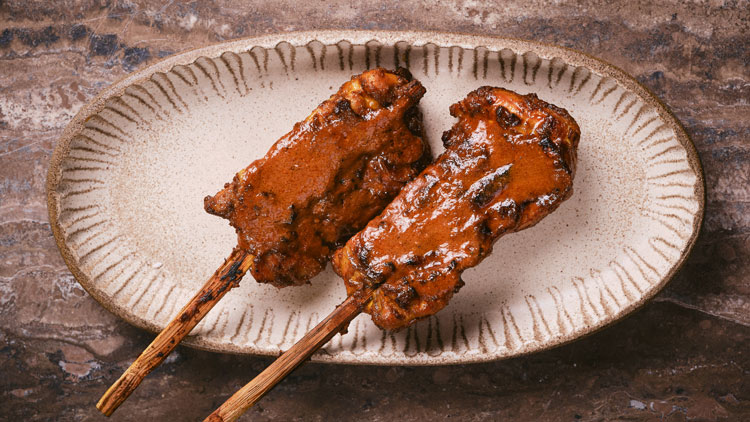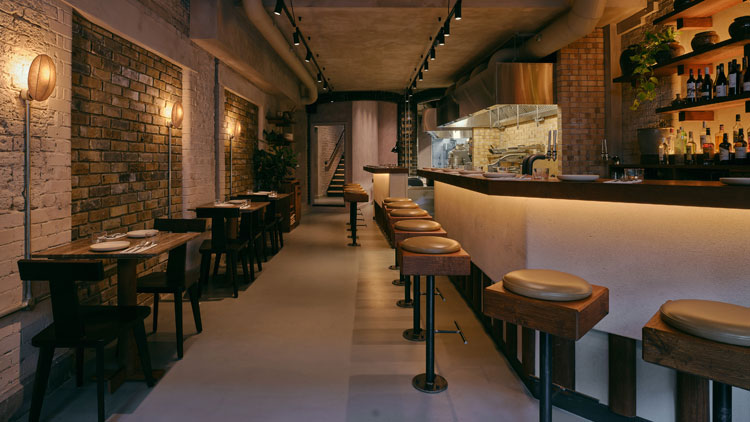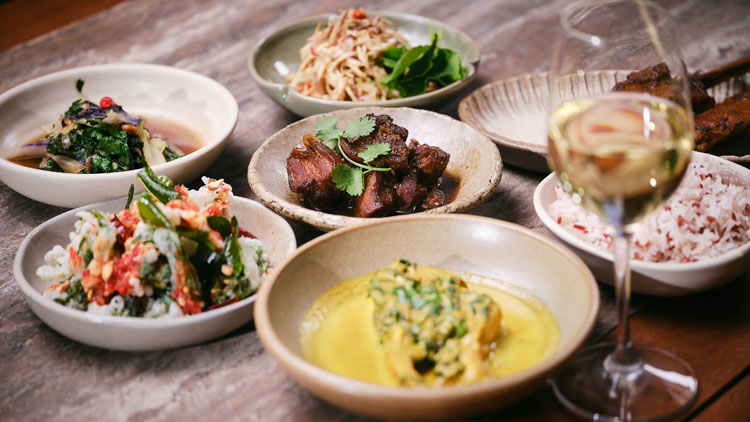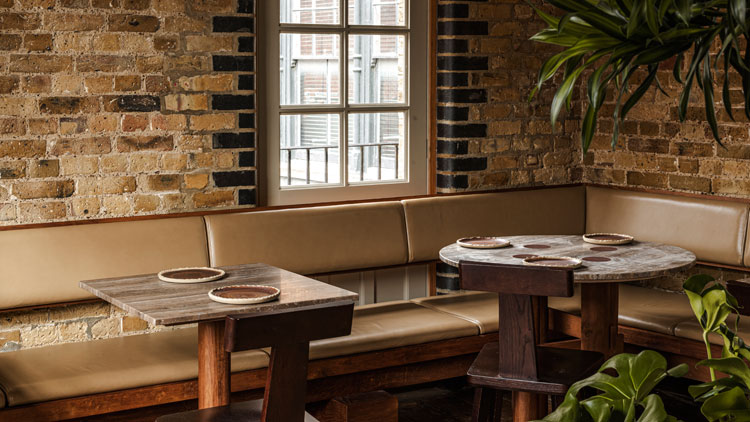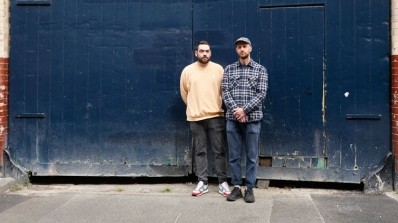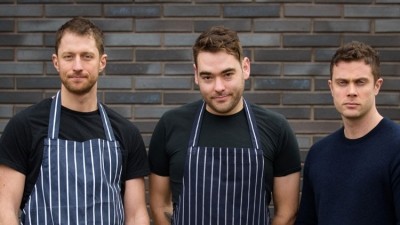Inside Kolae, the new southern Thai restaurant from the Som Saa duo
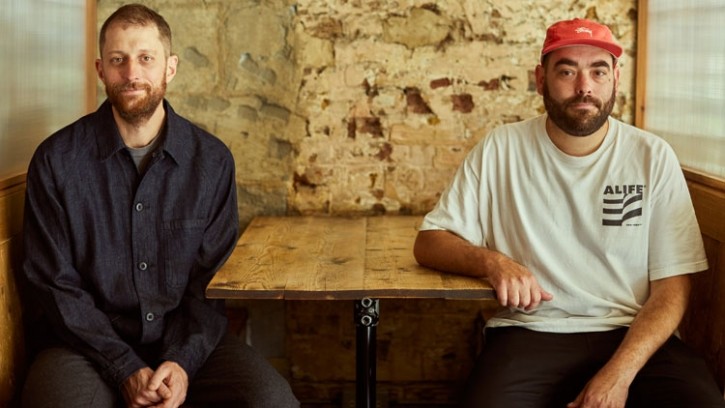
When Som Saa launched in 2016 its chefs Andy Oliver and Mark Dobbie joked that success would be measured in covers and cash but also the amount of coconuts they got through. At their second Thai restaurant performance will be partly assessed by the number of clothes peg-like skewers – ingredients are clasped rather than being pierced - that the kitchen uses.
Moments from Borough Market, Kolae takes its name from a dish that is little known outside of Thailand. “It’s pronounced somewhere between gol-ay and kol-ay,” says Oliver. “Kolae is a dish but also a cooking technique that sees proteins – often chicken – marinated in a coconut-based sauce and grilled.”
A cousin of satay, kolae has its roots in Southern Thailand’s Muslim community but is now consumed all over the region. “As you move further south, it becomes more Malay in style,” Oliver continues. “Like a lot of Thai food, what you initially think is just one recipe turns out to be a whole family of recipes with different regional variations.”
Each protein – current options include chicken, mussels, and hogget chops – has its own specific marinade. Made on site each day, the coconut cream is flavoured with a curry paste that contains the primary flavours of southern Thai cuisine in varying ratios including dried chillies, fresh turmeric, palm sugar, fish sauce, shallots and shrimp paste.
Depending on the dish, the team may also utilise dry spices and ginger, or perhaps add a sour element by means of tamarind or som kaek. For example, strongly-flavoured hogget gets a robust marinade that uses a lot of dried spices including black pepper and fennel seeds while mussels are partnered with a less spicy, more acidic marinade.
The skewers are cooked on a large, multi-level bespoke grill that’s powered by charcoal and spent coconut shells. “We combine the shells with pandan leaves and rice to create a sweet, coconut-infused smoke. It is this that really brings the dish together,” says Dobbie. Items that require more intense heat are cooked on a Konro-style grill and ingredients that require a slower cook – including duck and pork jowl, which will soon feature on the menu – are cooked in a Charlie Oven (a contraption not unlike a Josper).
The beautiful south
Other dishes on Kolae’s menu include deep-fried prawn heads with turmeric and garlic, a very spicy relish of prawn, snake fruit and shrimp paste and a trio of curries. Side dishes include hom mali rice, coconut water pickles and a salad of kale and herb fritters with fermented chilli and cashew nuts.
In general, dishes are inspired by the cooking of the south of Thailand, which has not been as thoroughly explored as the food of central Thailand and the north by Western chefs cooking what is often referred to as ‘new wave’ Thai cuisine. This is starting to change, however, with Luke Farrell’s Plaza Khao Gaeng – which opened in central London last year – also majoring on southern Thai dishes.
While chilli heat is a hallmark of nearly all Thai cuisine, the food of the south has a reputation for being especially potent thanks to the liberal use of tiny-yet-deadly prik kee noo (literally: mouse shit chilli).
Friends in Thai places
Oliver and Dobbie met while working at David Thompson’s seminal Nahm restaurant in London, which was the first Thai restaurant in Europe to win a Michelin star. After Nahm, Oliver headed east to work at Bo.Lan in Bangkok (which, like the now-closed Nahm, has appeared on both The World’s 50 Best Restaurants list and the Asia’s 50 Best Restaurants list) while Australian-born Dobbie travelled in the opposite direction to work at Andy Ricker’s influential northern Thai food-focused Pok Pok restaurant in New York (he later worked at the Bangkok iteration of Nahm).
Together with Tom George, the duo launched Som Saa just down from Spitalfields Market in 2016 following a smash hit pop-up at Climpson’s Arch in London Fields the year before and an equally successful equity crowdfund raise. George is no longer involved in the business day-to-day but remains a director and a key shareholder in the group. His departure has seen Dobbie move more into an overall ops role, although he still has input into the menu, with Oliver focusing on the food. Both will split their time equally between Som Saa and Kolae.
Just ahead of the pandemic the then trio launched another equity crowdfunding bid, raising a little over £250,000 on the Seedrs platform for a second London site. It is this cash – along with six or so years’ worth of profits from Som Saa – that has been used to fund Kolae.
“We had a responsibility to those shareholders to be using that money to open a restaurant, so that is what we have done,” says Dobbie. “It’s been a long time coming and there have been a few setbacks along the way, not least the pandemic. But it’s all been worth it. This site has been nearly two years in the making but we absolutely love it. It feels great to finally be cooking and having people coming through the door.”
The right move
On Park Street a few doors down from Monmouth Coffee’s prominent corner site, Kolae is within the characterful three-storey space that was once home to Neal Yard’s Dairy’s warehouse. The space has 75-covers in total with a partly open kitchen on the ground floor with counter seating. Upstairs are a number of private dining rooms as well as regular restaurant seating.
“It’s an amazing site that was largely closed to the public until now,” says Oliver. “The rooms upstairs had bunk beds for travelling cheesemongers and cheesemakers.”
Borough Market is an unquestionably good fit for the pair’s distinctive brand of thoughtful and authentic Thai cooking, with Kolae close to a number of like-minded businesses including Elliot’s, Arabica and recently launched Sri Lankan restaurant Rambutan.
“The market has always been great but the quality of the businesses around its perimeter has really improved over the past decade or so,” says Dobbie. “It’s great to finally be part of the community here.”
“We have been trying to get a site in the area for some time – we had a few deals that were close that didn’t end up working out,” he continues. “Our landlord is Borough Market. One of the things that really appealed about working with them is that they were interested in our food and ethical credentials as well as our financial ones.”
Going back to more casual territory
Kolae is being pitched as a slightly more casual counterpoint to Som Saa. Prices are competitive given the area and the pair’s culinary clout. Generous chicken skewers cost £6 a piece and bowls of curry average out at about £14. The menu is also designed to be a little more flexible than the duo’s Commercial Street restaurant, which offers a la carte alongside a few set menus.
“We wanted to create something where people could pop in for a few plates at the counter on their own but that was also suitable for more involved meals,” Oliver says. “Som Saa has evolved. When we first started we brought a lot of things over from Climpson’s Arch including serving the food on plastic plates. It was quite street food-y and largely served dishes from northern Thailand. We now offer food from all over Thailand and aim to give people a really good level of service.”
It seems that many of Som Saa’s customers have grown up, and now want different things from the restaurant. Trading patterns have changed with business now spread more evenly through the week and people are spending more on food and a little less on alcohol.
“What people want from restaurants has changed post Covid, at least from our perspective,” Oliver continues. “People want something more experiential and perhaps a bit calmer.
“What people missed more than anything was food that they could not cook at home. What we do fits quite well into that.”
